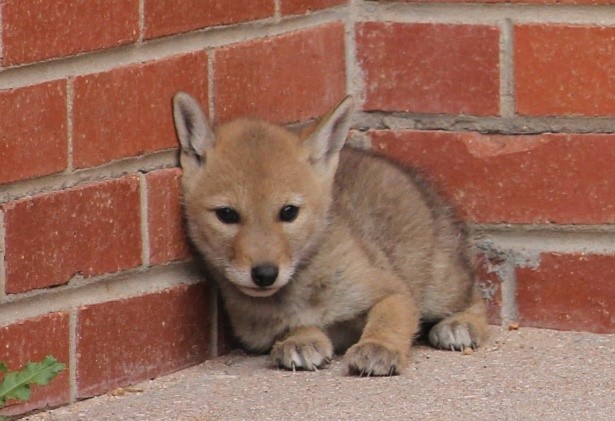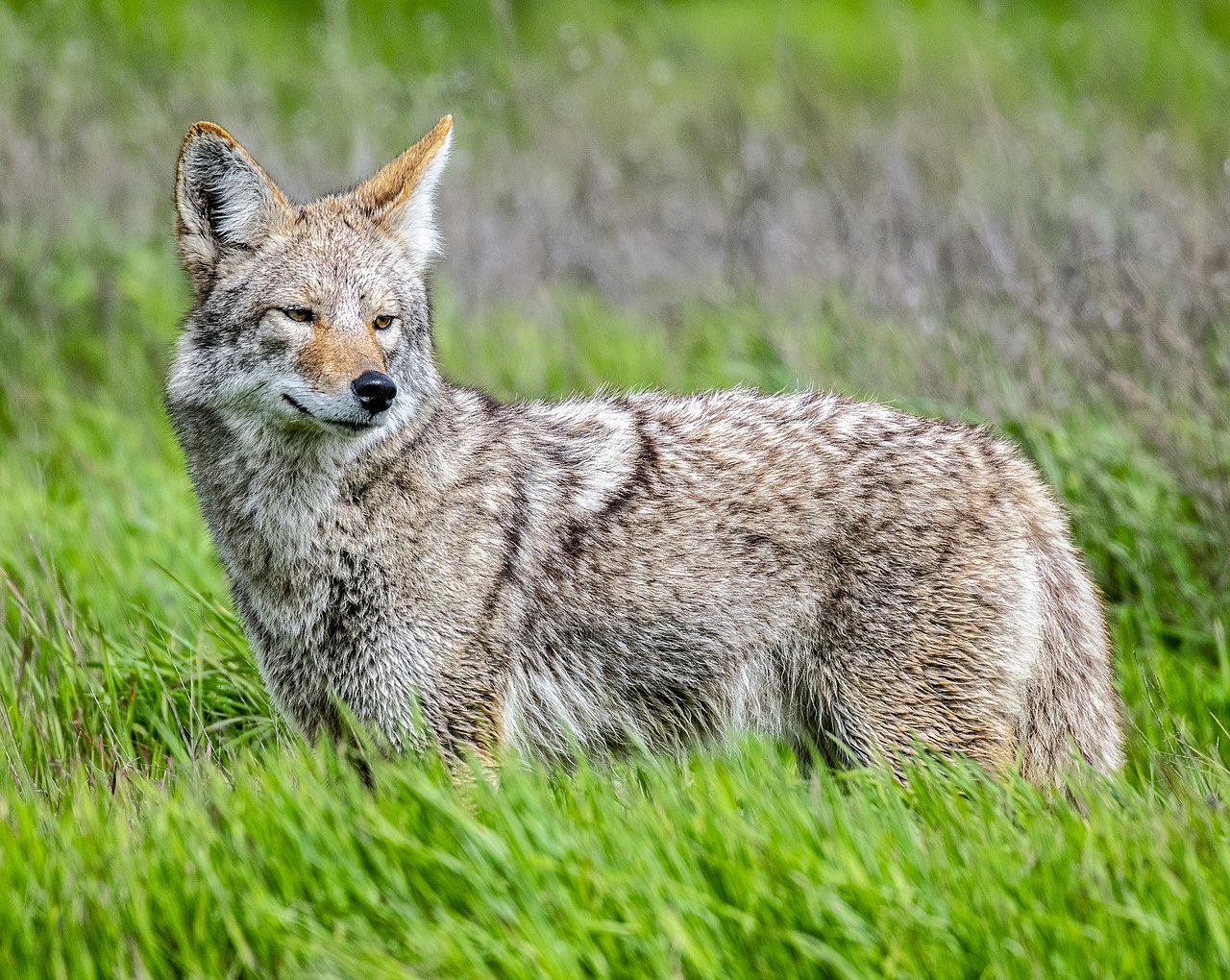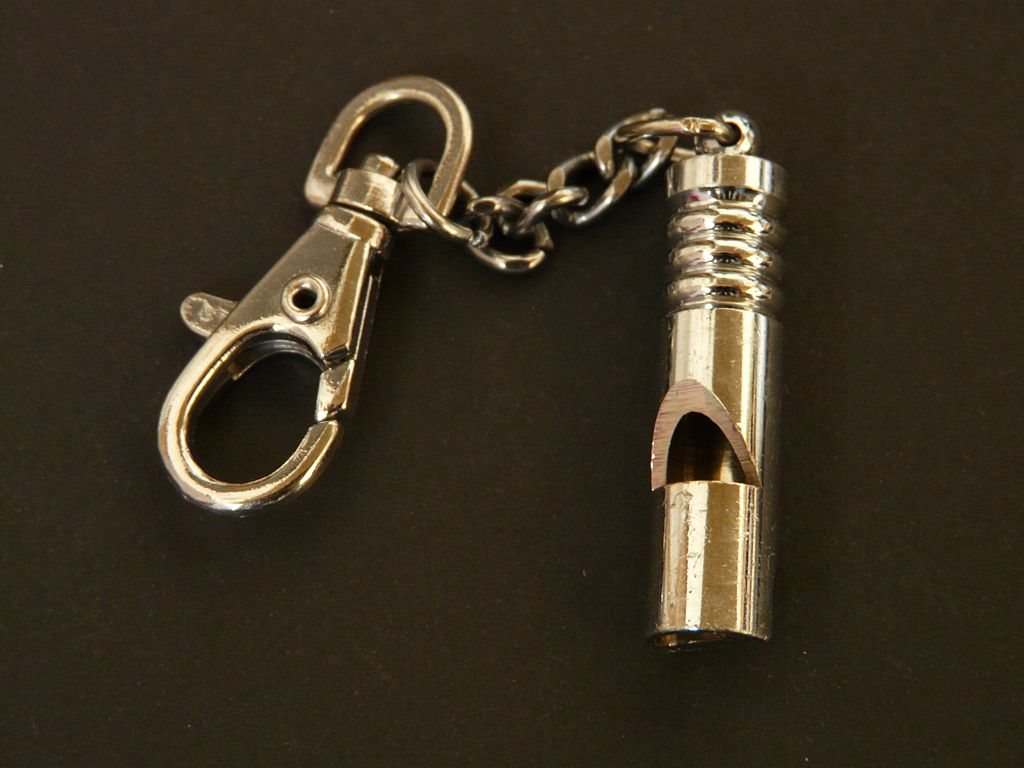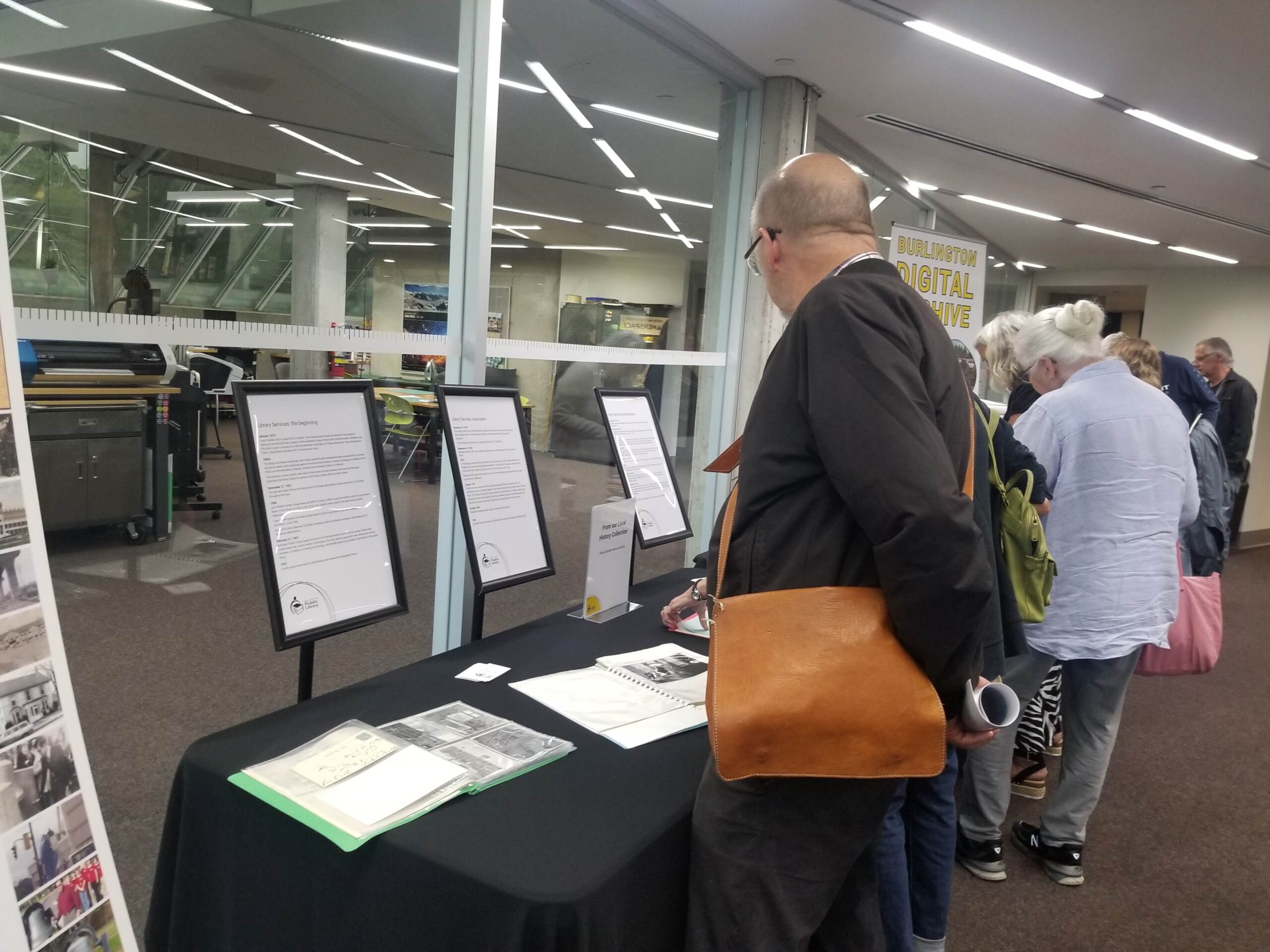A coyote deemed responsible for three recent unprovoked attacks on humans has been euthanized by the City of Burlington.
The attacks occurred in south central Burlington, within an approximate radius of 2 km. The first attack occurred on the Centennial Multi-use Trail at Seneca Avenue around 6:30 a.m. A woman jogging was leapt on and bitten from behind. The second attack was on a 2 ½ year-old in their own fenced backyard. The third attack occurred at the municipal lookout on Market Street, south of Lakeshore Rd., when a young woman was bitten and scratched on the leg. The toddler and young woman were both treated at Joseph Brant Hospital and then released.
None of these attacks were provoked; no food was present for the coyotes to be attracted to. Two out of three occurred in the daytime; the exact time of the “evening” attack is unknown. All of this is unusual coyote behaviour. Indeed, a 2009 study by L. White and S. D. Gehrt found only 142 reported coyote bite attacks on humans from 1960 to 2006 in the U.S. and Canada combined. The only confirmed fatality from a coyote attack was Taylor Josephine Stephanie Luciow, a 19-year-old singer from Toronto who died in Cape Breton Highlands National Park in 2009. For comparison, an average of one to two fatalities from dog attacks — usually “owned, known dogs” — happen in Canada yearly (Raghavan, 2008).
Reports of coyote attacks on Burlington residents’ pets, including one pet dog fatality in 2021, have residents concerned; understandably, the recent attacks on humans have many even more alarmed. No one wants their beloved family members, human or furry, to be injured or killed by coyotes.
What, then, should the City of Burlington and residents do?
Culling coyotes is not the answer, as much evidence shows that it does not solve the problem — other coyotes just move in to replace them (Knowlton et al., 1999; Conner and Morris, 2015; Kierepka et al., 2017).
Better understanding of coyotes by humans is useful. Of course, coyote attacks are incredibly distressing: but they are not typical coyote behaviour. Thompson and colleagues (2021) looked at home range size and habitat choice of urban coyotes and found strong evidence that urban coyotes actively avoid humans — of particular note is that the tracked coyotes in their study lived in the Greater Toronto Area, including Burlington. Others have similarly found evidence that coyotes avoid human activity.
Coyotes may become more aggressive during the breeding season and/or pup-rearing season (Poessel et al., 2013; Lukasik and Alexander, 2011; Baker and Timm, 2017). Those GTA coyotes tend used residential areas more often than natural areas during the breeding season (January to April) and the pup-rearing season (May to August; Thompson et al., 2021). This suggests that people should be particularly observant during these months if coyotes are known to be in their neighbourhood. The same study also found that coyotes tended to use natural areas more often during the day, and residential areas more often at night, so those night-time outdoor bathroom breaks by pets should be well-supervised.

“Conflicts” between coyotes and humans were found to be due to humans feeding coyotes, so that coyotes become used to humans, or “habituated,” or when coyotes were sick (Gehrt et al., 2009; White and Gehrt, 2009).
Dr. Jackie Prime, executive director of the Burlington-based non-profit Prime Earth, primatologist, and expert in the effects of human interference with wild animals, has this to say regarding what happens when coyotes become used to being fed by humans:
“Coyotes are naturally wary of humans, but they’re also intelligent, flexible creatures. If people feed them — either intentionally by leaving out food sources or unintentionally by leaving out garbage and food waste, pet food, even having bird feeders that can attract lots of squirrels and rodents to the yard — coyotes will come closer than normal in search of food. They will then test humans with aggression. This is what social animals do to establish hierarchies. It’s not about a desire to kill or injure a human, it’s about testing boundaries. And humans, as primates, are physically defenseless against the sharp canines and claws of a coyote. This is when things become very dangerous.
Coyotes are vital parts of their ecosystems and if left to eat natural foods, they will remain wary of humans and dangerous situations can be avoided.”
How to avoid these dangerous situations, and what to do if you see a coyote in your neighbourhood?
Well, first of all, don’t feed the coyotes. Try to avoid unintentionally feeding them, too — make sure pet food is not left outside, try not to let too much birdseed remain on the ground under feeders, pick ripe fruit from your fruit trees, don’t leave tasty (read: any) garbage outside until the morning that the garbage trucks are coming or use garbage cans with wildlife-proof lids (Coyote Watch Canada; White and Gehrt, 2009; Poessel et al., 2013; Baker and Timm, 2017). Supervise pets while they are outside, particularly during breeding and pup-rearing season; keep pets on-leash when walking them.
Second, reinforcing coyotes’ natural wariness of humans will lower the risk of habituating them (Baker and Timm, 2017). How to do this? By “hazing” coyotes you come across in your neighbourhood. The city’s recommended hazing methods are echoed in the sources listed in this article:
- Yell loudly
- Wave your arms and make yourself look as big as possible
- Use air horns, whistles, bang pots
- Throw small rocks, large sticks, cans and/or rubber balls at the coyote
- Spray the coyote with water from a garden hose or a water gun filled with vinegar.
- Use motion-sensor lights on your home
Also important for reducing conflicts between humans and coyotes in urban areas is reporting of any attacks, the presence of a clear municipal protocol for dealing with such conflicts, and adherence to the protocol. The City of Burlington has a Coyote Response Strategy, which can be found online here, and you can click here to report a coyote sighting.
Mayor Marianne Meed Ward released her statement regarding the recent coyote attacks on her website, commenting, “We are heartbroken that any residents were attacked and our thoughts are with them as they endure the subsequent medical treatments and recover. We are extremely grateful for their help in identifying this particular coyote so we could find and eliminate this threat, and ensure no other residents were injured.”
Councillor Paul Sharman of Ward 5 will be running a public education session on hazing techniques on Sunday, August 28 to address residents’ concerns. This will begin at 9 a.m. at Pineland School on Meadowhill Road; Burlington Animal Control staff will also be in attendance. Councillor Sharman also commented that “The city is committed to eliminate animals that attack people and draw blood. My best wishes to the people who were bitten for a speedy recovery.”
As for the three unprovoked attacks, whether the coyote attacker was sick or habituated is unknown. We asked how the City of Burlington was able to identify the specific coyote involved, and Nick Anastasopoulos, Director, Building and Bylaw, provided the answer:
“City of Burlington Animal Services Staff tracked the coyote to its den and continued to track it for days. They were able to get both photos and videos of this specific coyote to show victims for identification. It was a large, male coyote, lighter in colour and had distinctive markings where it was developing mange (hair loss, scabs). Most coyotes sleep during the day and are out at night and they typically run away from humans. This specific coyote’s behavior was also unique by being out during the day and was not spooked when staff were less than 10 feet away.”
Mayor Meed Ward noted that work was ongoing to determine what may have caused this coyote to attack, as well as steps the city can take to prevent any future incidents.
The city gives the following guidance regarding run-ins with aggressive coyotes:
Coyote sightings are common. If you see a coyote, keep your distance and the animal will most likely avoid you. If you come across an aggressive coyote:
- Stop and pick up small children and pets
- Use hazing techniques – shout loudly and wave your arms high in the air
- Back away slowly while remaining calm
- Never run or turn your back on a coyote
If you see an aggressive, sick or injured coyote, call 905-335-3030.
If a coyote poses an immediate threat to public safety, call 9-1-1 and alert the Halton Regional Police Service (HRPS).
Other important information from the City of Burlington:
- Concerns about direct or indirect feeding of wildlife can be reported to Animal Control at animalshelter.mailbox@burlington.ca
- Hand feeding and ground feeding wildlife on private or public property is prohibited by the city’s Lot Maintenance Bylaw (59-2018) and is subject to a $300 fine.
- To request an audit of your yard for coyote attractants by city Animal Control staff, please email animalshelter.mailbox@burlington.ca.
Sources:
Baker, R. O., and Timm, R. M. 2017. Coyote attacks on humans, 1970–2015: implications for reducing the risks. Human-Wildlife Interactions 11(2): 120–132.
CBC News. Oct. 28, 2009. Coyotes kill Toronto singer in Cape Breton. Url: https://www.cbc.ca/news/canada/nova-scotia/coyotes-kill-toronto-singer-in-cape-breton-1.779304 (accessed Aug. 25, 2022).
Conner, L. M., and Morris, G. 2015. Impacts of mesopredator control on conservation of mesopredators and their prey. PloS One 10: e0137169. doi: 10.1371/journal.pone.0137169.
Coyote Watch Canada. Coexisting with coyotes. Url: https://www.coyotewatchcanada.com/site/coexisting-with-coyotes (accessed Aug. 25, 2022).
Gehrt, S. D., Anchor, C., White, L. A. 2009. Home range and landscape use of coyotes in a metropolitan landscape: conflict or coexistence? Journal of Mammalogy 90(5): 1045–1057.
Kierepka, E. M., Kilgo, J. C., and Rhodes Jr., O. E. 2017. Effect of compensatory immigration on the genetic structure of coyotes. The Journal of Wildlife Management 81(8): 1394–1407.
Knowlton, F. F., Gese, E. M., and Jaeger, M. M. 1999. Coyote depredation control: an interface between biology and management. Journal of Range Management 52: 398–412.
Lukasik, V. M., and Alexander, S. M. 2011. Human-coyote interactions in Calgary, Alberta. Human Dimensions of Wildlife 16: 114–127.
Poessel, S. A., Breck, S. W., Teel, T. L., Shwiff, S. A., Crooks, K. R., and Angeloni, L. 2013. Patterns of human-coyote conflicts in the Denver Metropolitan Area. The Journal of Wildlife Management 77(2): 297–305.
Raghavan, M. 2008. Fatal dog attacks in Canada, 1990–2007. The Canadian Veterinary Journal 49(6): 577–581. Url: https://www.ncbi.nlm.nih.gov/pmc/articles/PMC2387261/#b2-cvj49pg577 (accessed Aug. 25, 2022).
Thompson, C. A., Malcolm, J. R., and Patterson, B. R. 2021. Individual and temporal variation in use of residential areas by urban coyotes. Frontiers in Ecology and Evolution, https://doi.org/10.3389/fevo.2021.687504.
White, L. A., and Gehrt, S. D. 2009. Coyote attacks on humans in the United States and Canada. Human Dimensions of Wildlife 14: 419–432.







